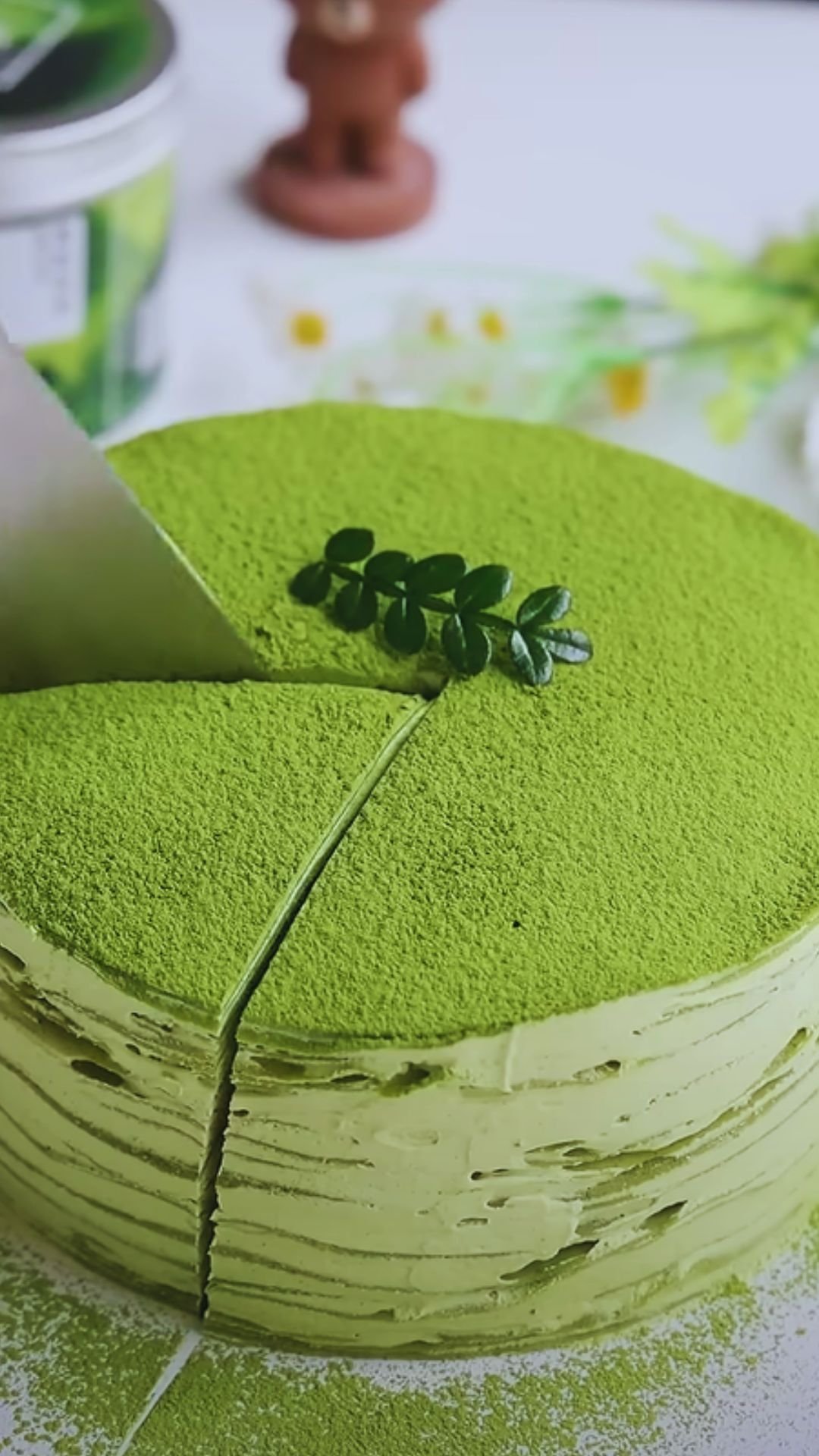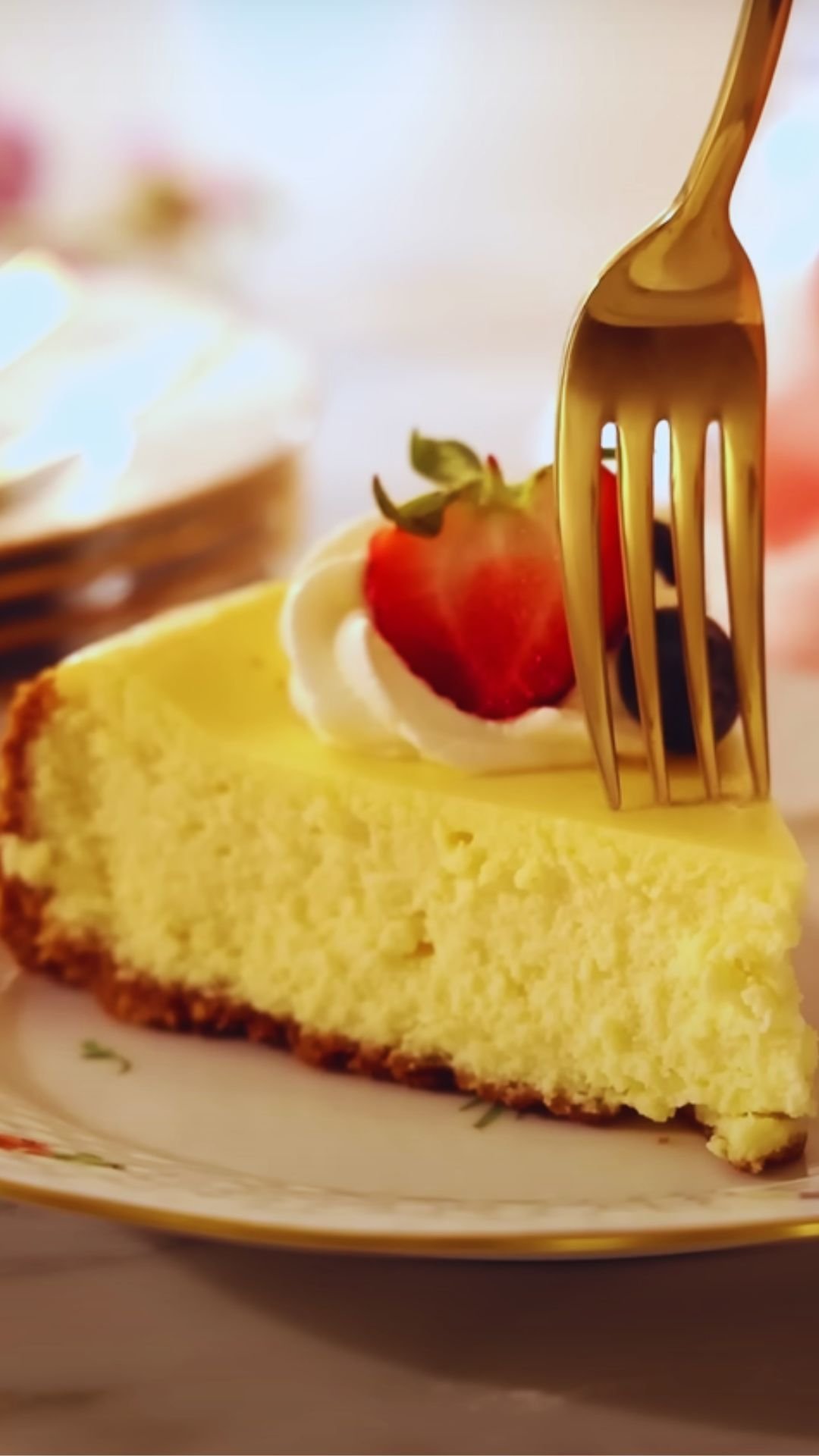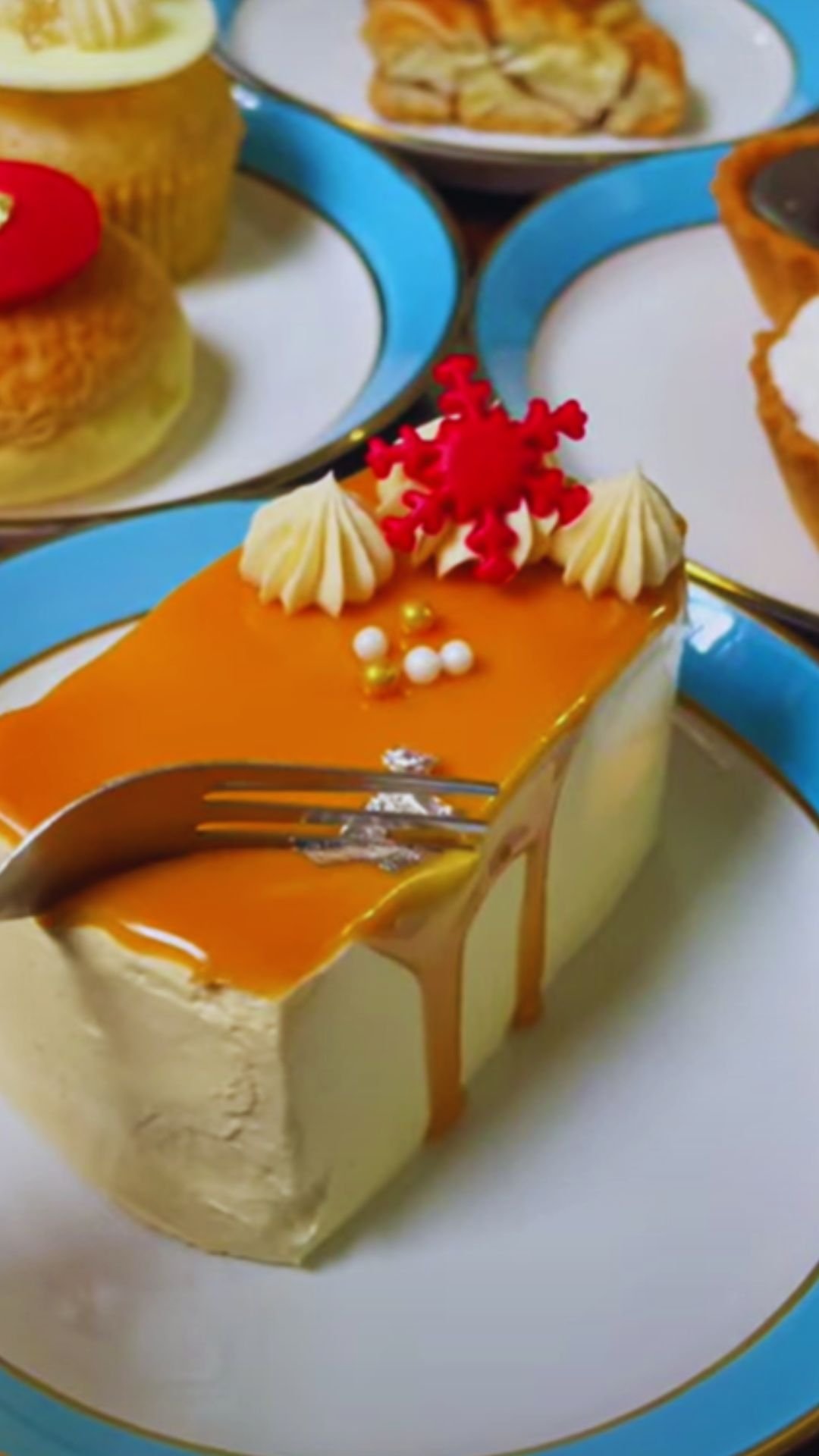There’s nothing quite like biting into a warm, freshly steamed Chinese egg cake. The pillowy texture that’s somehow both light as air and satisfyingly moist, the subtle sweetness that doesn’t overwhelm, and that distinctive eggy aroma that transports you straight to a bustling dim sum restaurant—it’s a sensory experience that has captivated me since childhood.
Today, I’m excited to share my perfected recipe for Chinese egg cake, also known as “ji dan gao” (鸡蛋糕). This beloved treat holds a special place in Chinese cuisine, particularly in dim sum traditions where these little yellow cakes are served as the perfect sweet finish to a savory meal. While they may look simple, achieving that signature texture—fluffy yet slightly custardy—requires understanding some key techniques that I’ve fine-tuned through years of practice.
Whether you’ve grown up enjoying these delights or are discovering them for the first time, I promise that mastering this recipe will bring an authentic piece of Chinese culinary tradition right into your kitchen. Let’s embark on this delicious journey together!
What Makes Chinese Egg Cake Special?
Before diving into the recipe, let’s understand what sets Chinese egg cake apart from other egg-based desserts around the world.
Chinese egg cake is uniquely characterized by:
- Texture: Extraordinarily fluffy and light with a slight bounce when touched
- Flavor: Delicately sweet with a pronounced egg flavor
- Cooking Method: Traditionally steamed rather than baked
- Appearance: Distinctive yellow color with a slightly domed top
- Ingredients: Simple pantry staples that create magic through technique
This humble cake relies not on complex ingredients but on the perfect balance of eggs, sugar, and flour—plus some crucial techniques that transform these basics into something remarkable. The steaming process creates that signature moist texture that’s impossible to achieve through baking alone.
The History Behind Chinese Egg Cake
Chinese egg cake has been enjoyed for generations, with roots tracing back to southern China, particularly Guangdong province. It became a staple offering at dim sum restaurants, where it’s traditionally served in small individual portions, often in paper cups.
What started as a simple way to use abundant eggs has evolved into a beloved treat that represents the Chinese philosophy of letting natural flavors shine. The cake’s appeal lies in its purity—showcasing the richness of eggs without masking it with excessive sugar or added flavors. This represents the essence of Chinese dessert philosophy, where subtle sweetness complements rather than overwhelms.
I remember my grandmother telling me how, in leaner times, receiving an egg cake was considered a special treat because eggs were precious commodities. Today, while eggs are readily available, the tradition of preparing and sharing these cakes remains a meaningful cultural practice, especially during celebrations and family gatherings.
Essential Ingredients for Authentic Chinese Egg Cake
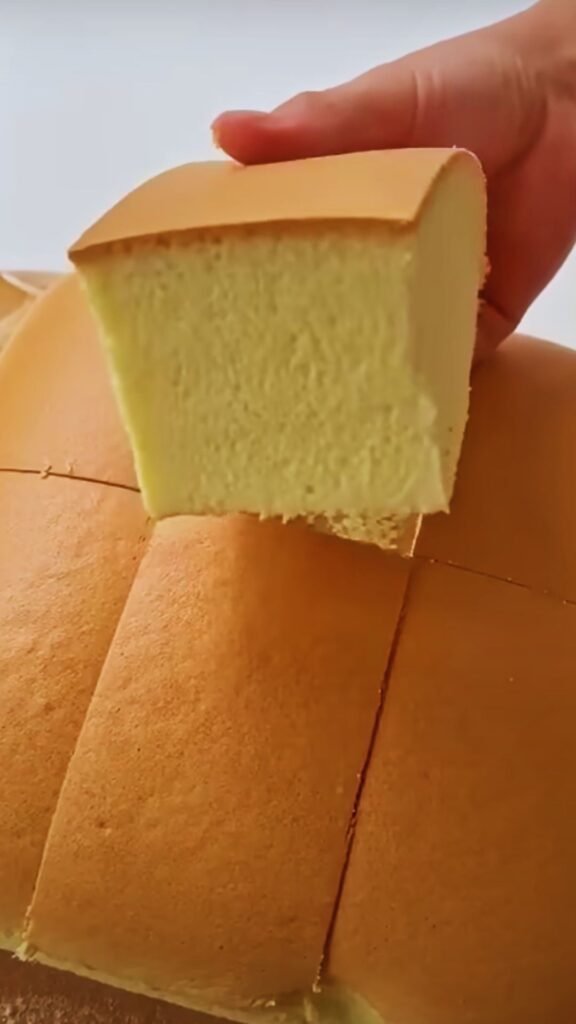
The beauty of Chinese egg cake lies in its simplicity. You’ll need just a handful of ingredients:
| Ingredient | Amount | Notes |
|---|---|---|
| Eggs | 4 large | Room temperature for maximum volume |
| Granulated sugar | 100g (1/2 cup) | Fine sugar dissolves better |
| Cake flour | 100g (3/4 cup) | Sifted for best texture |
| Baking powder | 1/2 teaspoon | For that perfect rise |
| Vegetable oil | 2 tablespoons | Use neutral-flavored oil |
| Milk | 2 tablespoons | Whole milk works best |
| Vanilla extract | 1/2 teaspoon | Optional but adds depth |
| Salt | Pinch | Enhances the egg flavor |
Ingredient Notes:
- Eggs: The absolute star of this recipe. Farm-fresh eggs with vibrant yellow yolks will give your cake that gorgeous golden color. Always use room temperature eggs, as they whip to greater volume.
- Flour: Cake flour is strongly recommended for its lower protein content, which results in a more tender cake. If unavailable, you can substitute all-purpose flour mixed with cornstarch (for every cup of all-purpose flour, remove 2 tablespoons and replace with 2 tablespoons cornstarch).
- Sugar: While standard granulated sugar works well, super-fine sugar (not powdered) dissolves more readily into the egg mixture, creating a smoother batter.
Kitchen Tools You’ll Need
For authentic Chinese egg cake, you’ll need:
- Bamboo steamer or metal steaming rack
- Large wok or pot for steaming
- Electric mixer (stand or handheld)
- Rubber spatula
- Sifter for flour
- Mixing bowls
- Ramekins or traditional Chinese egg cake molds
- Parchment paper
The bamboo steamer is traditional and imparts a subtle aroma, but any steaming setup will work. The key is having a vessel large enough to hold your steamer above boiling water without the water touching the cakes.
The Perfect Chinese Egg Cake Recipe
Preparation Time
| Task | Time |
|---|---|
| Preparation | 15 minutes |
| Steaming | 15-20 minutes |
| Cooling | 5 minutes |
| Total | 35-40 minutes |
Step-by-Step Instructions
1. Prepare Your Steaming Station
- Fill a large wok or pot with about 2 inches of water
- Place your steaming rack inside, ensuring the water doesn’t touch the rack
- Bring water to a gentle boil
- Line your steaming containers with parchment paper
2. Prepare the Eggs
- Separate the eggs into yolks and whites
- In a large bowl, beat the egg yolks with half the sugar (50g) until pale and ribbon-like
- Add oil, milk, and vanilla (if using) to the yolks and mix until well combined
3. Perfect the Meringue
- In a separate clean, dry bowl, beat egg whites until frothy
- Gradually add the remaining sugar (50g) while continuing to beat
- Add the pinch of salt
- Beat until stiff peaks form—when you lift the beater, the peaks should stand straight up with just a slight curl at the tip
4. Combine the Batters
- Sift the cake flour and baking powder directly into the egg yolk mixture
- Fold gently until just combined—don’t overmix
- Add 1/3 of the meringue to the yolk mixture and fold gently to lighten
- Add the remaining meringue in two additions, folding with a light hand using a cutting motion
- The batter should be light and airy with no visible streaks of egg white
5. Steam to Perfection
- Pour the batter into your prepared molds, filling each about 3/4 full
- Tap the molds gently on the counter to release any large air bubbles
- Cover with a clean kitchen towel (not the steamer lid directly, as condensation might drip onto cakes)
- Place in the preheated steamer
- Steam over medium heat for 15-20 minutes, until a toothpick inserted comes out clean
- Avoid opening the steamer during cooking as temperature drops can cause cakes to collapse
6. The Crucial Cooling Phase
- When done, remove from steamer and let stand for about 1 minute
- Gently remove cakes from their molds and place on a cooling rack
- Allow to cool slightly before serving—they’re best enjoyed warm!

Troubleshooting Common Issues
Even experienced cooks can encounter challenges with this delicate cake. Here are solutions to common problems:
| Issue | Possible Cause | Solution |
|---|---|---|
| Cake collapsed after steaming | Temperature fluctuation or undercooking | Maintain steady heat; don’t open lid during steaming |
| Dense, heavy texture | Overmixed batter or deflated meringue | Fold gently; ensure stiff peaks in meringue |
| Cake stuck to paper | Paper not properly prepared | Lightly grease parchment paper before using |
| Uneven cooking | Steamer too hot or uneven heat distribution | Use medium heat; rotate containers halfway if needed |
| Wrinkled top | Condensation dripping onto cake | Use cloth under steamer lid to catch droplets |
| Eggy smell too strong | Old eggs or overcooked | Use fresh eggs; reduce steaming time slightly |
Variations to Try
While the traditional recipe is perfect on its own, here are some variations I’ve experimented with that respect the authentic character while adding subtle twists:
Pandan Egg Cake
Add 1/2 teaspoon of pandan extract to the egg yolk mixture for a fragrant Southeast Asian-inspired variation. The gentle green color and unique flavor pair beautifully with the eggy base.
Coconut Milk Egg Cake
Replace regular milk with coconut milk and add 2 tablespoons of desiccated coconut to the batter for a tropical twist that’s still authentic to Chinese flavor profiles.
Brown Sugar Egg Cake
Substitute half the granulated sugar with light brown sugar for subtle caramel notes that complement the egg flavor wonderfully.
Mini Tea-Infused Egg Cakes
Steep 1/4 cup of milk with 2 teaspoons of jasmine or oolong tea leaves, then strain and cool before adding to the recipe. This adds a delicate tea fragrance that’s commonly paired with desserts in Chinese cuisine.
Serving Suggestions
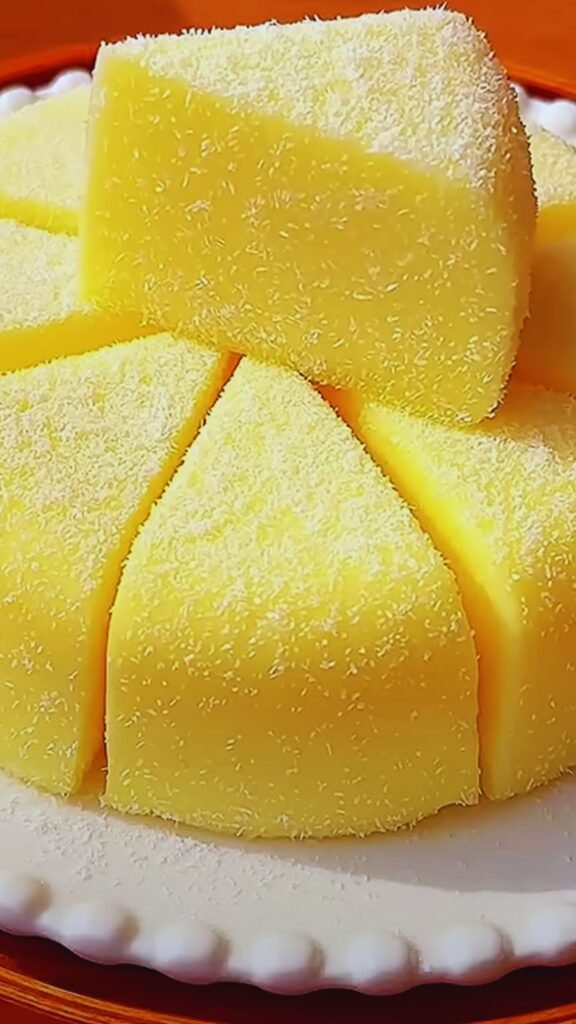
Chinese egg cake is traditionally enjoyed:
- As part of a dim sum spread
- With a cup of hot Chinese tea (oolong or jasmine work particularly well)
- As a light breakfast alongside fresh fruit
- As an afternoon snack
- Plain, without additional toppings or garnishes, to appreciate its pure flavor
For a more modern presentation, I sometimes dust the cakes lightly with powdered sugar or serve with a small dish of honey for dipping. Fresh berries also make a beautiful accompaniment, though this is certainly a departure from traditional serving methods.
Storage Tips
Chinese egg cake is best enjoyed fresh from the steamer, but if you have leftovers:
- Store at room temperature in an airtight container for up to 1 day
- Refrigerate for up to 3 days, but note that the texture will become denser
- To refresh, steam again for 2-3 minutes or microwave for 10-15 seconds
I don’t recommend freezing these cakes as the delicate texture suffers significantly.
The Cultural Significance
In Chinese culture, eggs symbolize fertility and new beginnings, which is why egg-based desserts often appear at celebrations like birthdays and New Year festivities. The round shape of traditional egg cakes further represents completeness and family unity.
I’ve found that sharing these little cakes brings people together in a unique way. There’s something about their humble appearance that belies their complex texture and flavor—much like many aspects of Chinese culture that value substance over flashiness.
When I make these cakes for friends unfamiliar with Chinese desserts, they’re often surprised by how different they are from Western cakes—less sweet, lighter in texture, but deeply satisfying. It’s a wonderful entry point into discussing the philosophical differences in Eastern and Western culinary traditions.
Health Considerations
Chinese egg cake is relatively light compared to many Western desserts. Here’s an approximate nutritional breakdown per serving (one small cake):
| Nutrient | Amount |
|---|---|
| Calories | 120-150 |
| Protein | 4g |
| Carbohydrates | 18g |
| Fat | 5g |
| Sugar | 12g |
| Sodium | 50mg |
While not low in sugar, these cakes provide good quality protein from the eggs. The steaming method also means they contain less fat than typical baked goods, as no additional butter is needed for the recipe.
For those with dietary restrictions:
- Gluten-free: Substitute regular flour with a gluten-free all-purpose flour blend (results may vary in texture)
- Dairy-free: Replace milk with a plant-based alternative like almond or oat milk
- Lower sugar: Reduce sugar by up to 25% while maintaining the technique (though texture will be slightly different)
Questions & Answers About Chinese Egg Cake
Q: Why did my egg cake collapse after I removed it from the steamer?
The most common cause is temperature shock. Try removing the lid gradually rather than all at once, and avoid moving the cakes to a much cooler area immediately. Also ensure they’re fully cooked—a toothpick should come out clean.
Q: Can I bake these cakes instead of steaming them?
While you can bake them at 325°F (163°C) for about 15-18 minutes, the texture will be noticeably different—more like a western sponge cake than the unique texture that steaming provides. Steaming creates that distinctive bouncy quality that defines authentic Chinese egg cake.
Q: My egg whites won’t reach stiff peaks. What am I doing wrong?
Ensure your bowl and beaters are completely free from grease or egg yolk residue. Even a tiny amount of fat will prevent proper whipping. Additionally, cold egg whites whip better than room temperature ones, which is the opposite of most baking guidelines.
Q: Can I make this recipe in a large cake instead of individual portions?
Yes, but you’ll need to adjust the steaming time to 25-30 minutes for a larger cake. Use a bamboo steamer large enough to accommodate your cake pan, and check doneness carefully as the center takes longer to cook.
Q: Is Chinese egg cake the same as Japanese cheesecake?
While they share some similarities in technique (particularly the whipped egg whites), Japanese cheesecake contains cream cheese and has a different flavor profile and slightly denser texture. Chinese egg cake celebrates the pure flavor of eggs without additions.
Q: My cake has a strong eggy smell that’s overwhelming. How can I reduce this?
Fresh eggs typically have a milder aroma. If your cakes have too strong an egg smell, try adding a little more vanilla extract or even a small amount of lemon zest to balance it. Also, make sure not to overcook, as this intensifies the eggy aroma.
Final Thoughts
Creating authentic Chinese egg cake at home connects us to centuries of culinary tradition. While the ingredients are humble, the techniques—particularly achieving that perfect meringue and mastering the gentle art of folding—make all the difference between a mediocre cake and an exceptional one.
I hope this deep dive into Chinese egg cake has inspired you to try your hand at this beloved treat. There’s a special satisfaction in watching these simple ingredients transform into something so ethereal and distinctive. Even better is sharing them with loved ones and seeing their delight at that first bite into these pillow-soft treasures.
Remember that perfection comes with practice. Your first batch might not be flawless, but each attempt will bring you closer to mastering this beautiful expression of Chinese culinary artistry. Happy steaming!

